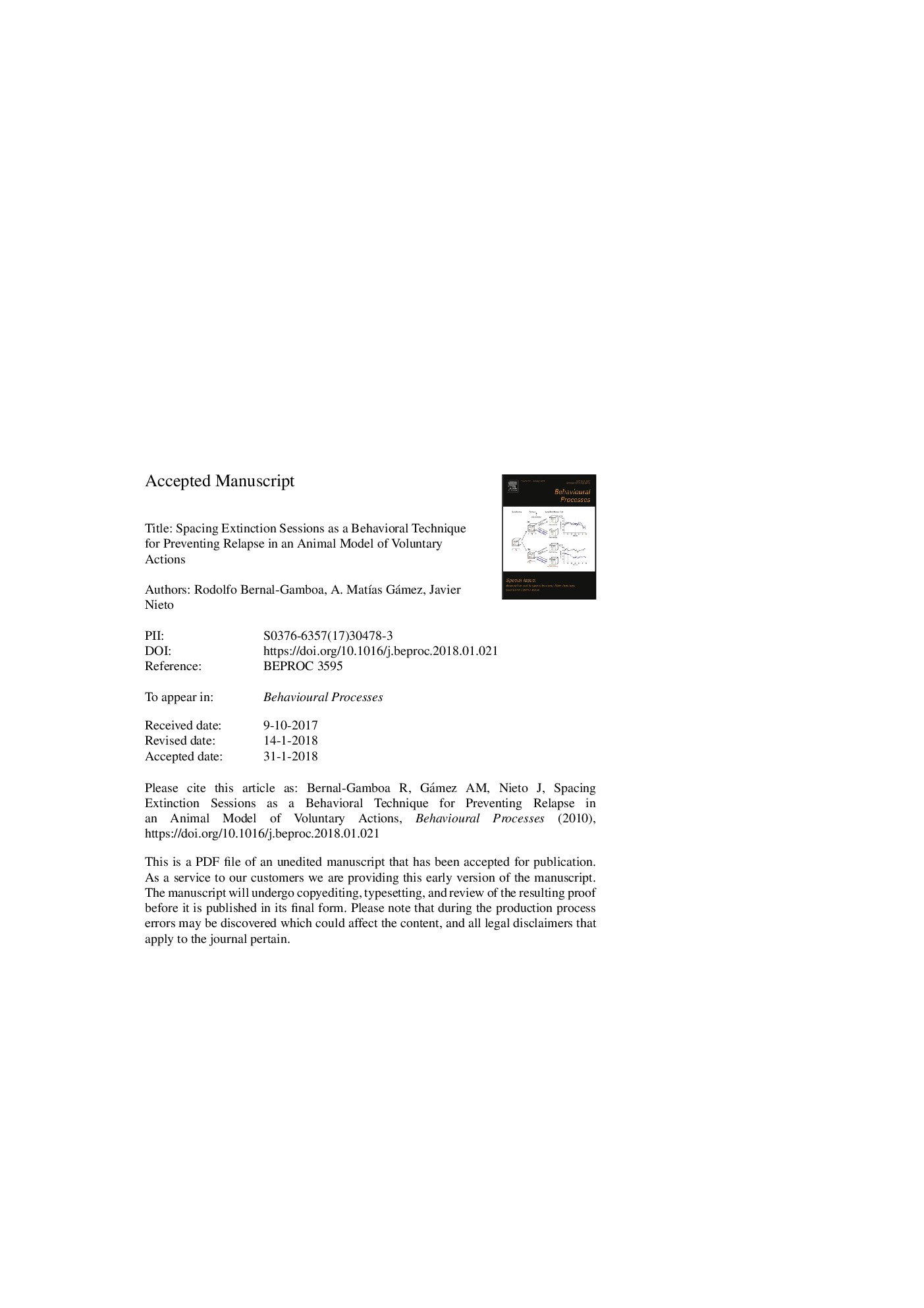| Article ID | Journal | Published Year | Pages | File Type |
|---|---|---|---|---|
| 8496966 | Behavioural Processes | 2018 | 37 Pages |
Abstract
Instrumental extinction has been proposed as a model for understanding the suppression of problematic voluntary actions. Consequently, it has been suggested that response recovery after extinction could model relapse. Four experiments with rats used a free operant procedure to explore the impact of spacing extinction sessions on spontaneous recovery, renewal, reinstatement, and rapid reacquisition of extinguished lever-pressing. Initially, in all experiments, hungry rats were trained to perform two responses (R1 and R2) for food. Then, all responses underwent extinction. For R1, rats experienced a longer intersession interval (72â¯h) than for R2 (24â¯h). During the final restoration test, it was observed that using spaced extinction sessions reduced spontaneous recovery, renewal, and reinstatement. However, implementing a longer intersession interval throughout extinction exposure did not slow the rate of reacquisition of operant responses. The present findings suggest that in most cases extinction is more enduring when the extinction sessions are spaced. Since expanding the intersession interval during extinction might be interpreted as conducting extinction in multiple temporal contexts, the overall pattern of results was explained based on contextual modulation.
Keywords
Related Topics
Life Sciences
Agricultural and Biological Sciences
Animal Science and Zoology
Authors
Rodolfo Bernal-Gamboa, A. MatÃas Gámez, Javier Nieto,
